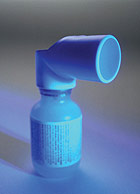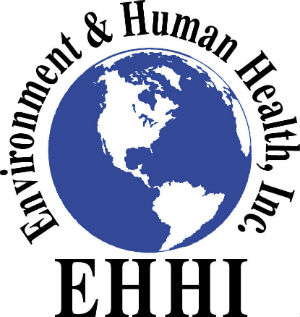Asthma: Press Release
Asthma is a serious disease whose severity and mortality rates have continued to increase, despite the fact that medicines to treat asthma have improved. Between 1979 and 1995, asthma among children under the age of 18 rose by 74 percent, while the disease in children under the age of five increased by 160 percent. The cost of asthma to the U.S. health-care system totals more than 11 billion dollars, including both direct and indirect costs, with hospitalization accounting for the highest cost.
Study findings were based on data collected from school nurses who used multiple sources of data. The survey showed that 9.7 percent of Connecticut's school children in grades K-5 were known to have asthma by their school nurses. This percentage translates into the fact that in Connecticut nearly one in 10 school children has asthma.
"If one extrapolates the percentage of students from K-5, who have been found in this study to have asthma, to the entire student body in Connecticut in grades K-12, then one can estimate that approximately 64,000 school children in Connecticut have asthma," said Nancy Alderman, president of Environment and Human Health, Inc. "These are extraordinarily high numbers to which attention must be paid."
Eileen Storey, M.D., M.P.H., director of the Center for Indoor Environments and Health at the University of Connecticut Health Center and first author of the asthma research study, said, "Our research in this study shows that asthma is common in every community, but far more so among students living in urban communities and in poorer parts of the state."
Environment and Human Health's last asthma report, released in 2000, showed that among Connecticut’s elementary school children there was a reported 7.8 percent average asthma prevalence rate.
Dr. Storey reported that "the most recent figures from this study show a rise in the prevalence rates of asthma in the past four years, which may reflect increased recognition of asthma, better recording by school nurses, or a true increase in the rate of the disease among Connecticut school children."
"Our study shows that asthma rates vary considerably from one school to another within communities," said Mark Cullen, M.D., professor of occupational and environmental medicine at Yale University and co-author of the study. "Whether this reflects differences in the environments at home, in the community, at school, or in all three is an important question. Our study did not address home or community environments, but did demonstrate that a high proportion of Connecticut's schools have environmental problems, such as water damage, roach and pest infestations, indoor renovations, pesticide use and idling buses, which may contribute to or exacerbate asthma."
"In responding to this research study, school nurses used multiple sources of data in order to identify students who were diagnosed with asthma," said Nadine Schwab, R.N., M.P.H., nursing supervisor for the Westport Public Schools and an author of this report. "While obtaining such data provides critical public health information, collecting and reporting it consumes precious educational resources intended for student health services.
"Therefore, state and federal funds are needed to develop and support an electronic, statewide system for retrieving and reporting to public health officials aggregate disease data from school districts," continued Schwab. "Student health records and health data reporting systems in our schools need to be upgraded and computerized."
Susan Addiss, M.P.H., MUrS, past commissioner of the Connecticut Department of Public Health and director of health education for Environment and Human Health, Inc., said, "Not only do these high rates of asthma cause enormous burdens to the state health-care system as well as lost school days for many of these asthmatic students, but these numbers are so high that we all must begin to bring to bear whatever solutions are available to help alleviate this serious situation. Sixty-four thousand students with asthma, or almost 10 percent of our student population, is certainly in epidemic proportions."
Congresswoman Rosa L. DeLauro (D-CT) added, "I'm so pleased to have worked with Environment and Human Health, Inc., which has produced such a timely and comprehensive report. It gives us a clearer picture of the problem surrounding childhood asthma and tells us how we can best direct our energies and resources so that we can do more to address this growing epidemic. With this information, I look forward to working with my colleagues in both the House and Senate to strengthen our efforts at the federal level against a disease that affects one out of every ten children in Connecticut."
